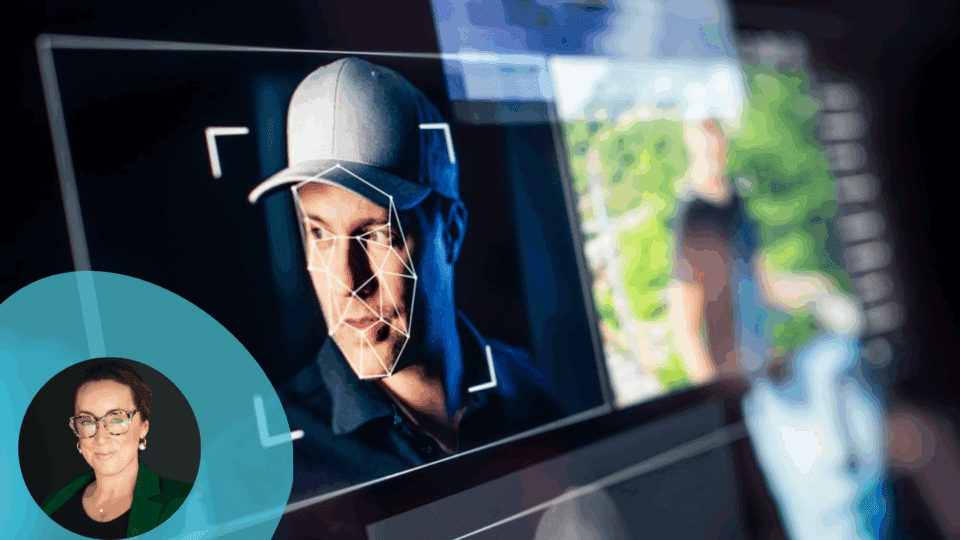The retail and Consumer Packaged Goods (CPG) industries are undergoing a profound change, driven by the wins and failures of integrating artificial intelligence (AI) and image recognition (IR) into their processes, experiences, you name it. While these technologies are enabling brands and retailers to gain precise, real-time insights into store operations like never imagined, providing better data faster, nothing about this step function change is simple or obvious.
As competition intensifies — especially with the rise of off-label and store-label brands — AI-powered image recognition is becoming essential for maintaining customer loyalty, optimizing margins and staying ahead in pricing strategies. Now, it’s up to us as technology leaders in the space to make AI adoption accessible and successful for these companies.
Several factors are driving the increased adoption of AI and IR in the extended retail value chain, starting with operational efficiency. The fact is that traditional methods of store audits, inventory checks and compliance monitoring are far too time-consuming and prone to errors. AI-powered IR automates these processes, offering real-time insights into shelf conditions, real-time product availability and promotional compliance, while also freeing up store staff for higher-value work. Walmart leverages AI for audits and has seen significant reduction in labor hours there
The rapid emergence of private-label brands across multiple categories also has heightened competition. Retailers and brands alike need tools to monitor competitors’ pricing and promotional strategies on a daily basis to remain agile. This is particularly crucial in categories where private label has gained significant market share, such as in grocery, self-care and household essentials.
AI can solve this if deployed in the right way. For example, we see retail service providers with massive regional or national teams out in the field every day leveraging their team to gather real-time shelf data via image recognition, and sell that data back to brands or data providers in order to report back real-time shelf insights across various categories or brands.
Any big variations in deployment, or price, can then guide those field teams or CPG brand teams back in-store to make adjustments quickly, without having to use their expensive field assets to try to find these issues organically themselves. Stumbling upon problems is a thing of the past; problem-solving needs to be precise, exact, quick.
A third factor is cloud computing, edge processing and 5G networks, which all have enabled faster data processing and analysis at scale. What would have taken two to three minutes to process just a few years back now takes five to 10 seconds to gather AI-driven results! The scalability of cloud solutions allows for seamless integration across large retail networks, and most leading-edge tech can now operate entirely offline while still providing a seamless user experience (and send data up to the cloud when it reconnects to a signal).
Finally, today’s shoppers demand personalized experiences and faster service. I certainly do. Image recognition really should enhance customer engagement by optimizing product placement and enabling visual search capabilities. This aligns with the growing trend of using mobile apps for in-store navigation and product discovery.
If the data tells the customer the product should be there, then the product should be there, and IR can play a major role in ensuring that it is there. I can’t tell you how many times I’ve showed up to a CVS needing something that said it was on-shelf and available — only to find it’s 100% not. Talk about a great way to lose a customer at that moment of truth.
Benefits for Retailers and Suppliers
The integration of AI and IR offers significant advantages for both CPG brands and retailers, including value such as:
- Real-time shelf insights: AI algorithms analyze images to detect stockouts, misplaced products or noncompliance with planograms. This ensures optimal shelf space utilization and reduces lost sales opportunities. For example, real-time shelf insights help retailers quickly identify and rectify stockouts, which can lead to significant revenue losses if not addressed promptly.
- Agile pricing strategies: Image recognition tools identify price tags on shelves in real time, allowing businesses to track competitor pricing regionally or nationally. This data drives agile pricing adjustments and promotional strategies. By monitoring competitor pricing daily, retailers can make informed decisions to stay competitive in dynamic markets.
- Enhanced customer experience: By ensuring shelves are well-stocked and promotions are correctly displayed, retailers deliver seamless shopping experiences that build customer loyalty. Consistent execution of in-store promotions also helps maintain brand image and trust.
- Cost savings: Automating audits reduces labor costs while increasing accuracy. For example, Repsly’s experience is that shelf audits conducted with IR save from 20% to 50% of time compared to manual processes. This reduction in labor costs can be reinvested to spend more time in each location building better relationships with store personnel or to cover more stores.
- Data-driven decision making: AI-powered platforms consolidate visual data with sales metrics, consumer behavior patterns and market trends to generate actionable insights for strategic planning. This holistic view of market dynamics enables more effective decision-making across various business functions.
Staying Ahead in a Competitive Landscape
The rise of private label brands has disrupted traditional markets, forcing CPG companies to innovate rapidly. AI-powered image recognition helps brands stay competitive by collecting real-time pricing intelligence when in the field, to adjust pricing strategies dynamically based on competitors’ actions. This is particularly important in categories where price elasticity is high, such as in electronics or home appliances. Doing that data collection manually in one to two categories could take 20 to 30 minutes per store visit — with a picture, it takes one to two minutes.
It is also critical to ensure compliance with promotional displays enhances visibility and drives sales growth. Proper execution of promotions helps maintain brand partnerships and retailer relationships. Up to 55% of sales promotions to this day don’t have an impact on sales. That’s just not acceptable anymore. Also, by analyzing consumer behavior patterns through visual data, brands and retailers can tailor their offerings to meet specific regional or demographic needs. This personalization leads to increased customer loyalty and retention.
Advice for Getting Started
For companies looking to implement AI-powered image recognition systems, the following steps help ensure successful adoption:
- Define clear objectives: Identify very specific goals, such as improving shelf compliance, reducing team’s audit times or optimizing pricing strategies. Clear objectives guide technology selection and implementation plans.
- Invest in scalable infrastructure: Choose cloud-based solutions that can process large volumes of data quickly. Scalability is crucial for handling the vast amounts of visual data generated from multiple store locations.
- Train personnel: An image is only as good as the photographer, so ensure store managers and employees understand how to use IR tools effectively. Proper training improves data quality and system accuracy. Training sessions should cover both the technical aspects of the tools and how to interpret insights for actionable decisions.
- Start small but plan big: Pilot the technology in a few stores or regions before scaling across the organization. Use initial results to refine processes before full deployment, using a phased approach to identify issues early and ensure smoother integration. Our trials are designed for proof of ROI as well, which can guide the scales strategy..
- Leverage industry experts: Collaborate with technology providers that specialize in retail execution optimization through AI-powered IR. These partnerships provide valuable expertise and support during implementation and beyond.
- Measure success with KPIs: Establish metrics like audit accuracy rates, time savings and revenue impact from improved shelf conditions. Regularly evaluate performance against these benchmarks, and create clear controls when you are testing as well. Tracking KPIs helps in making data-driven decisions to further optimize the use of AI and IR technologies.
AI-powered image recognition is revolutionizing retail operations by providing faster access to actionable insights that drive efficiency, enhance customer experiences and optimize pricing strategies. As competition intensifies — particularly from private-label brands — these technologies offer a critical edge for CPG companies and retailers seeking sustained growth. It’s an edge we think more CPGs need to take advantage of.
To truly thrive in the ever-expanding retail world, companies can and should leverage AI-powered IR by thinking big, setting clear goals, sharpening their team’s skills and riding the wave of real-time data analytics. It’s all about working smarter, not harder!
Cait Will is the Chief Revenue Officer at Repsly, helping CPG brands and retail service orgs achieve their goals of selling more in the retail channel. With over 20 years of experience, Will brings deep expertise in growth, customer success, sales and marketing. Previous to Repsly, Will made waves working at marketing agencies and successful SaaS companies.





